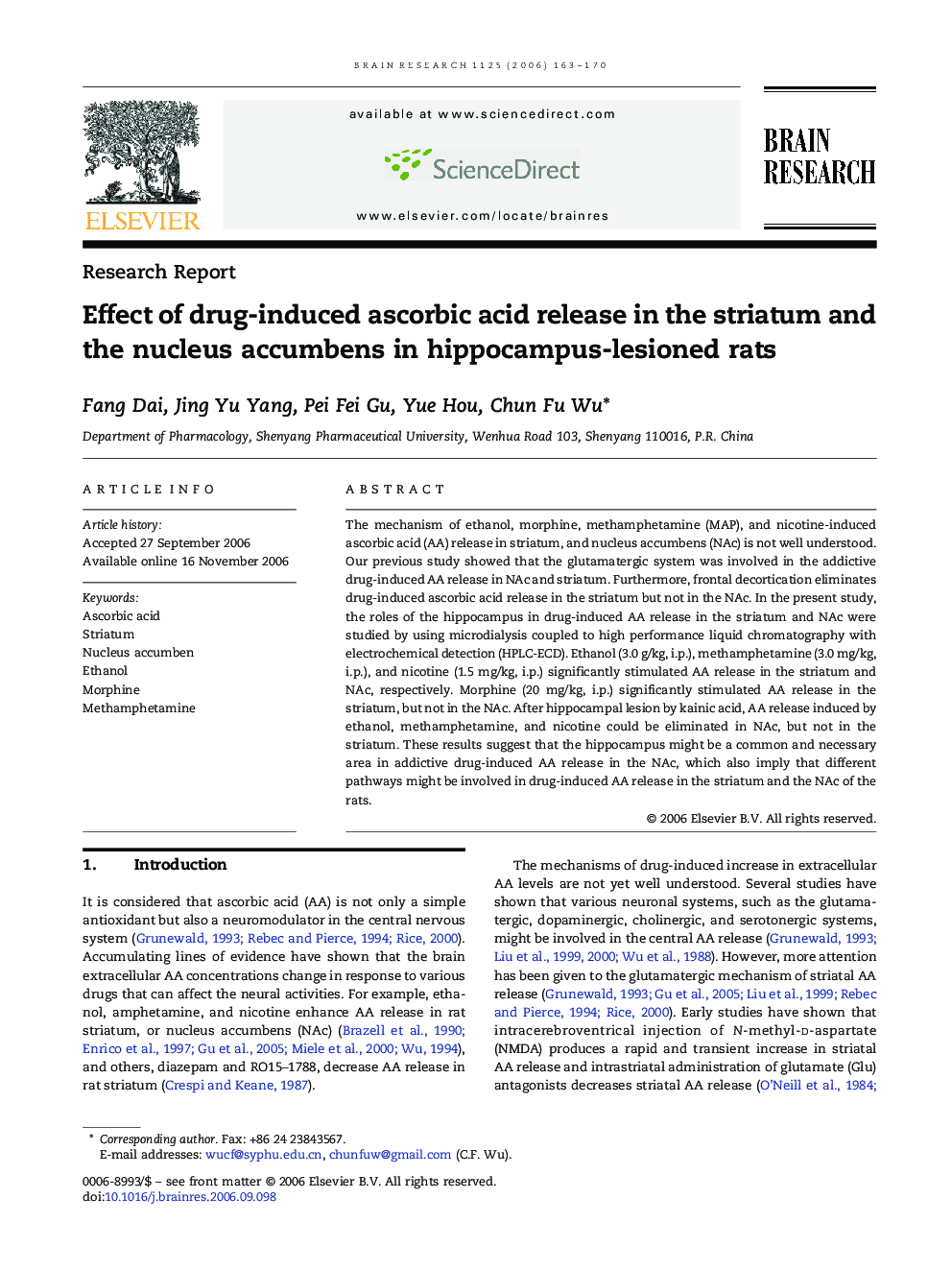| Article ID | Journal | Published Year | Pages | File Type |
|---|---|---|---|---|
| 4331741 | Brain Research | 2006 | 8 Pages |
The mechanism of ethanol, morphine, methamphetamine (MAP), and nicotine-induced ascorbic acid (AA) release in striatum, and nucleus accumbens (NAc) is not well understood. Our previous study showed that the glutamatergic system was involved in the addictive drug-induced AA release in NAc and striatum. Furthermore, frontal decortication eliminates drug-induced ascorbic acid release in the striatum but not in the NAc. In the present study, the roles of the hippocampus in drug-induced AA release in the striatum and NAc were studied by using microdialysis coupled to high performance liquid chromatography with electrochemical detection (HPLC-ECD). Ethanol (3.0 g/kg, i.p.), methamphetamine (3.0 mg/kg, i.p.), and nicotine (1.5 mg/kg, i.p.) significantly stimulated AA release in the striatum and NAc, respectively. Morphine (20 mg/kg, i.p.) significantly stimulated AA release in the striatum, but not in the NAc. After hippocampal lesion by kainic acid, AA release induced by ethanol, methamphetamine, and nicotine could be eliminated in NAc, but not in the striatum. These results suggest that the hippocampus might be a common and necessary area in addictive drug-induced AA release in the NAc, which also imply that different pathways might be involved in drug-induced AA release in the striatum and the NAc of the rats.
